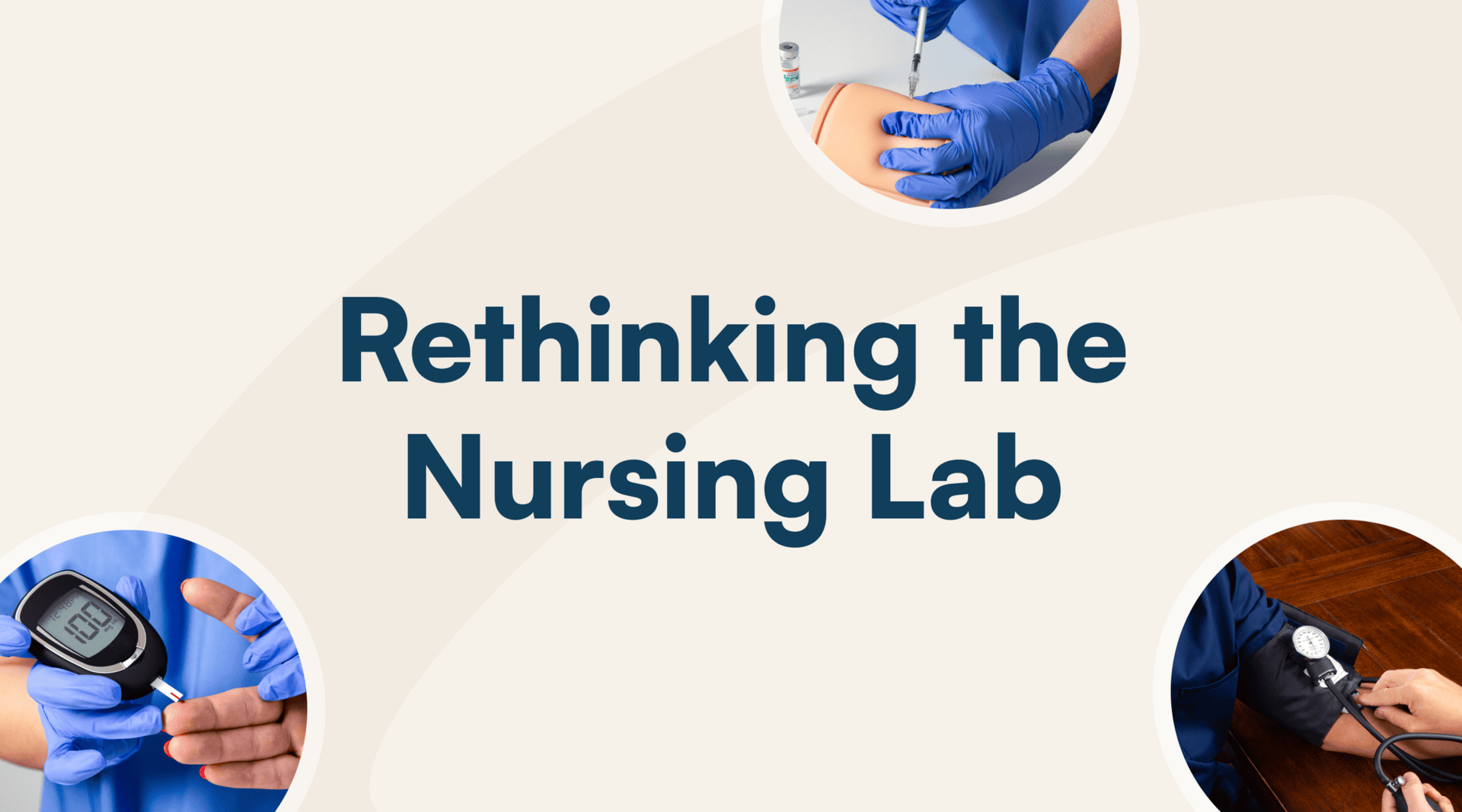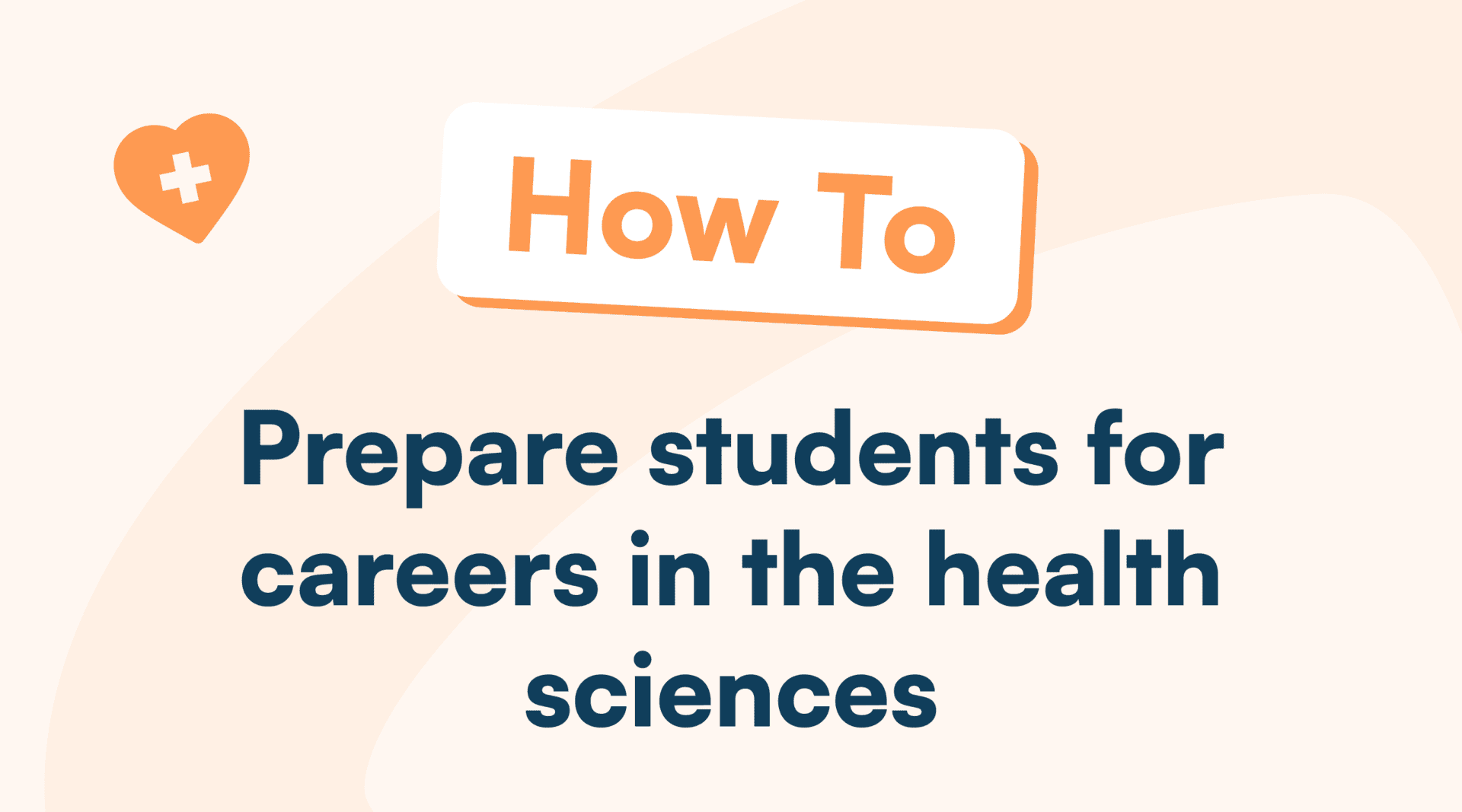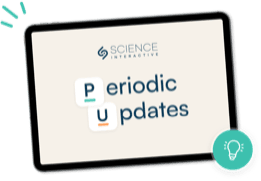A lack of confidence and preparation might just prevent your students from pursuing this path.
In additional studies and surveys, enrollment trends in health science and allied health programs have shown various shifts over the past few years. For example, data released last year by the American Association of Colleges of Nursing (AACN) showed that the number of students in entry-level baccalaureate nursing programs decreased by 1.4% last year, ending a 20-year period of enrollment growth in these programs. At the same time, resignations among healthcare workers have increased steadily from about 400,000 per month in 2020 to nearly 600,000 per month in May 2023. The vacancy rate—the difference between the number of job openings and hires—has also increased during this period.
Still, healthcare-related occupations are projected to grow at a rapid rate of 13% from 2023 to 2033, a much faster rate than the average for occupations, presenting colleges and universities with a unique opportunity to curb a workforce shortage in these fields and meet market demand. To do it, they’ll need to appeal to a broader pool of students, including those pursuing continuing education, looking to make career changes or complete degrees, as well as those interested in dual enrollment—and deliver courses in ways that suit these students’ needs and prepare them for careers in what is arguably our most important sector.
Building High-Quality Lab Experience to Spark Student Interest
Whether online or on-campus, preparing students effectively is a challenge. In fact, we surveyed more than 2,100 administrators, instructors, and students this summer and asked what their top challenge was. All three groups agreed: a lack of preparation. Eighty percent of administrators and instructors said that students aren’t prepared because they lack prerequisite knowledge and are often not engaged. Similarly, more than half of students said they don’t feel confident or prepared for labs.
Still, there are millions of students nationwide enrolled in biology, chemistry, anatomy & physiology, microbiology, chemistry, and even general organic biology prerequisite courses each year, and many want to be able to take these courses online. Nearly 90% of students we surveyed this past summer said they want online options, while nearly 75% of deans and department chairs report steady growth in online lab course enrollment since 2021, with key drivers in part attributed to pre-health science students. What’s more, 30% of students said they wouldn’t enroll at all if they didn’t have the option to do it online, closing the door to many students who would otherwise consider pursuing a career in health sciences.
This leaves programs with a tremendous opportunity to adapt to student needs, effectively prepare for courses, as well as influence their decision to pursue advanced health science studies. But to do that well in today’s digital landscape, you’ll have to create a lab experience that feels just as authentic and is just as high quality as a face-to-face lab experience.
Incorporate Hands-on Learning Online
Providing students with an opportunity to learn by doing, to test their hypotheses, and to question results remain essential aspects of a lab experience. In fact, without them, it’s difficult if not impossible to build foundational skills in scientific literacy, let alone progress into advanced studies or feel prepared for careers in the health sciences.
Telicia Ward-Thomas, instructor at American National University and 2024 Golden Goggles Student Champion of the Year, is always advocating for student success. “Through Science Interactive, I ensure that students gain hands-on experience and critical thinking skills required for their success as pharmacy technicians, all while meeting accreditation standards and fostering a learning environment that bridges the gaps between theory and practice.”
As part of the 2024 Annual Lab Report, we asked more than 1,800 students taking online lab courses what made them feel prepared and confident in the knowledge and skills they were learning. An overwhelming majority—84% of surveyed students—said they felt they had learned the knowledge and skills they needed in the online course because of hands-on labs. They also said it made the course more engaging, which aligns with the 90% of instructors who said using hands-on labs helped students gain the knowledge and skills needed to meet course outcomes and apply concepts in the real world.
Valeria Calderon, a student at Hillsborough Community College awaiting acceptance into a nursing program, said about hand-on labs, “When I received my hands-on chemistry kit, I was impressed. I didn’t think it was going to be that thorough. To see actual chemicals and real experiments! There was a ton more in there than expected there would be. I’m also someone that likes to work independently and go at my own pace. For me, that means watching lectures quickly but then re-watching sections where I need more clarification.”
As another student shared, “It was better to have hands-on labs because I’ll be doing more of that when I transfer to USF. I wouldn’t feel as prepared with just the virtual labs, and now I’m more confident I won’t have any issues with my credits transferring because it was a hands-on lab experience…I was pretty happy with this experience and felt like I learned a lot!”
As one microbiology department chair responded to the survey, “Using at-home hands-on lab kits are great for online students to learn the same concepts at a microscale. They are rigorous and force students to work for a grade.”
Dr. Effat Zeidan Hatoum, Associate Professor of Science and Mathematics, Biological Sciences at California Baptist University shared, “These hands-on kits have significantly boosted student engagement, allowing students to actively participate in scientific experiments from home, mirroring an in-person lab setting. Family members are engaging in the lab experiments along with the students, which enhances the overall learning experience.”
Additional research by The American Chemical Society reinforces this data. Students who engage in well-designed laboratory experiences have a greater opportunity to develop problem-solving and critical-thinking skills, as well as gain exposure to reactions, materials, and equipment. ACS research also shows that sustained investment in hands-on experiences help inspire students to further their education and prepare them for careers by fostering skills sought by potential employers.
Addressing Ease of Use and Cost Concerns
While administrators and faculty widely view hands-on labs as the most effective way to deliver a lab experience that is comparable to an in-person lab, some instructors hesitate to implement hands-on labs into their online course due to concerns over added time and effort. Survey responses from the 2024 Annual Lab Report show that the significant majority of instructors using hands-on labs found them easy to incorporate into their courses.
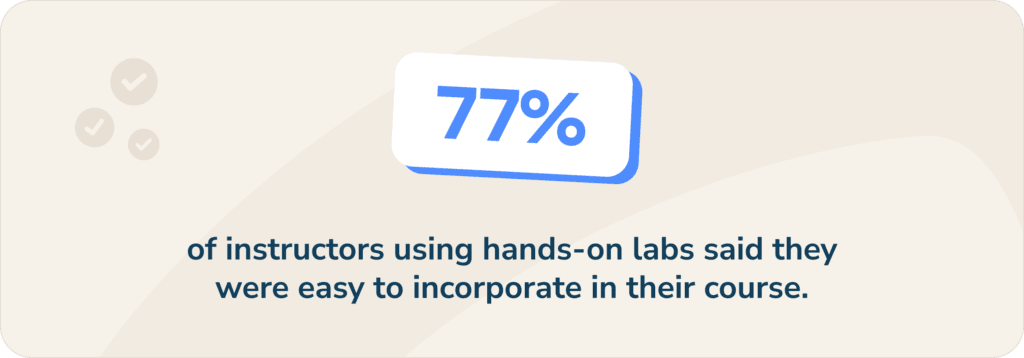
Furthermore, 75% of instructors said hands-on labs were comparable to an in-person lab experience, a 12% increase from last year, and 90% said these labs provided students with the knowledge and skills needed to apply their learning to the real world. And affordability remains a top concern, instructors and students both agree that hands-on labs are worth the investment.
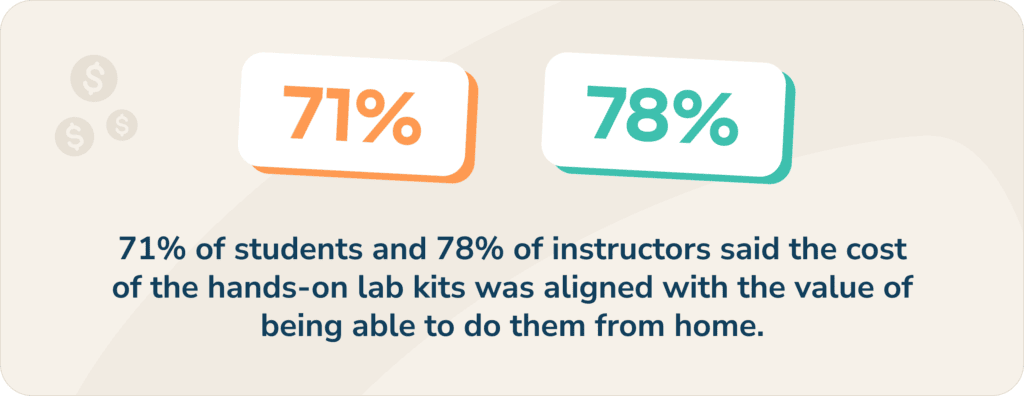
As one student taking an online chemistry lab at Cape Fear Community College said, “While there’s a cost for a hands-on kit, you can’t argue with the value. If you really care about your education and you want a valuable experience, this is completely worth it.”
Supplement Learning With Virtual Simulations Online or as Pre-labs
Many of today’s students are digital natives, which means they are comfortable using technology and have practice consuming and synthesizing information digitally. Consider incorporating virtual simulations as a way to reinforce their learning.
As Victor Chiericoni, a student at Community College of Baltimore County and aspiring surgical technician shared, “I found great value in doing both hands-on and virtual labs as a part of my lab experience. The virtual labs reinforced his learning and gave me the chance to repeat and practice as needed, going at his own pace. That mix was engaging, and he felt he was able to learn and retain more as a result.
Whether your course is fully online, on-campus, or hybrid/blended, using virtual simulations as part of course assignment activities can elevate and enrich the learning experience. In fact, 84% of students say that virtual simulations would be a helpful resource for practicing and reinforcing key skills. One full-time biology student shared as part of their 2024 Annual Lab Report response, “Virtual simulations help me learn due to less fear of critical errors, and I can repeat experiments until I get it, which helps me learn better.”
When used in conjunction with hands-on labs, they provide several benefits:
- Enriched learning experience for stronger skills: Supplement with hands-on lessons and help students engage more deeply and build practical skills more quickly
- Increased lab readiness with pre-labs: Use virtual simulations as a pre-lab activity to reinforce critical concepts and prepare students before in-person labs in a low stakes environment
- Increased accessibility: Expand access to the field, keep costs reasonable, and balance the time spent on campus for with convenient, accessible & efficient ways to engage in quality learning experiences
For example, Lisa Jones, Pharmacy Technician Program Coordinator & Instructor at Aiken Technical College, delivers an engaging and effective lab experience for pharmacy tech students in her hybrid courses using a mix of hands-on and virtual pre-lab simulations. In addition to hands-on lab activities, she incorporates virtual lab simulations as online components of her courses. This reinforces hands-on learning with her lecture topics and helps maintain course affordability. This also allows students to still participate in learning activities that otherwise might be too difficult to replicate in a campus lab setting, for example certain drug dispensing systems or customer service experiences that are frequent in healthcare fields.
Taking preparation beyond knowledge acquisition, she ensures a learning environment that more deeply engages students in collaborative experiential learning activities that develop strong problem solving and critical thinking skills. “High-quality lessons, hands-on lab kits, virtual simulations, and a platform to deliver the content and assess student progress have helped my students learn and process course material better. My students practice in the very scenarios they’ll find themselves in once they begin working as a pharmacy tech.”
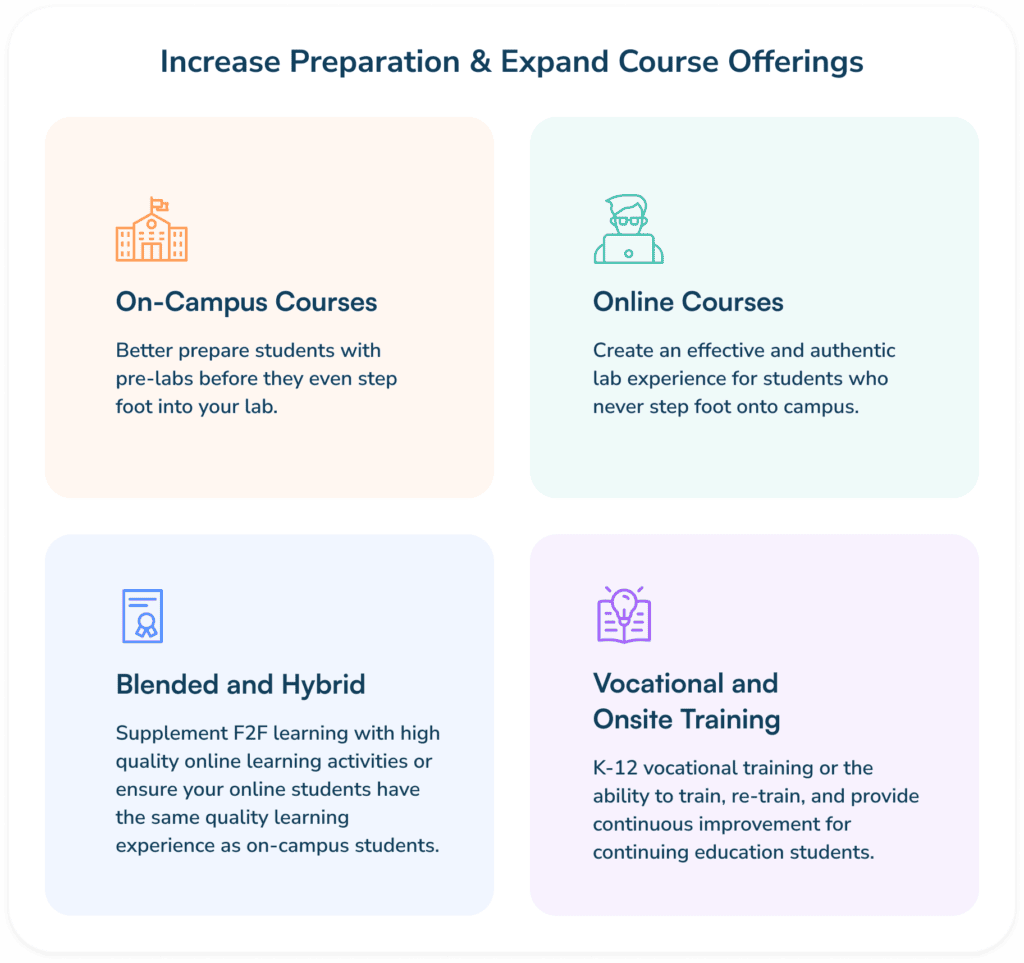
A Better Way to Support the Health Science Students
From ensuring quality and rigor to aligning your lab and lecture materials, we know there are a lot of moving parts you have to think about when it comes to your lab courses.
That’s why we make delivering high quality labs easy and engaging no matter where students are learning from. With a 3-phase process that includes research & development, review & testing, and Quality Matters certification, our virtual, hands-on, and pre-labs are turnkey ready to help your students acquire the critical knowledge and skills for careers in medical research, engineering, nursing, biology, genetics, and other allied health professions. Quick to implement and no need for large and expensive equipment, you can deliver the kind of lab courses, online, on-campus that helps students gain the knowledge and skills needed to pursue careers in the health sciences.
At the same time, you have the opportunity to expand access to important disciplines that continue to be in high demand while boosting enrollment. With the right partner and a strategic approach to your online, on-campus or hybrid/blended course, you can be sure you’re giving students the kind of learning experience that helps them apply concepts to the real world while driving better student outcomes.
Discover more articles
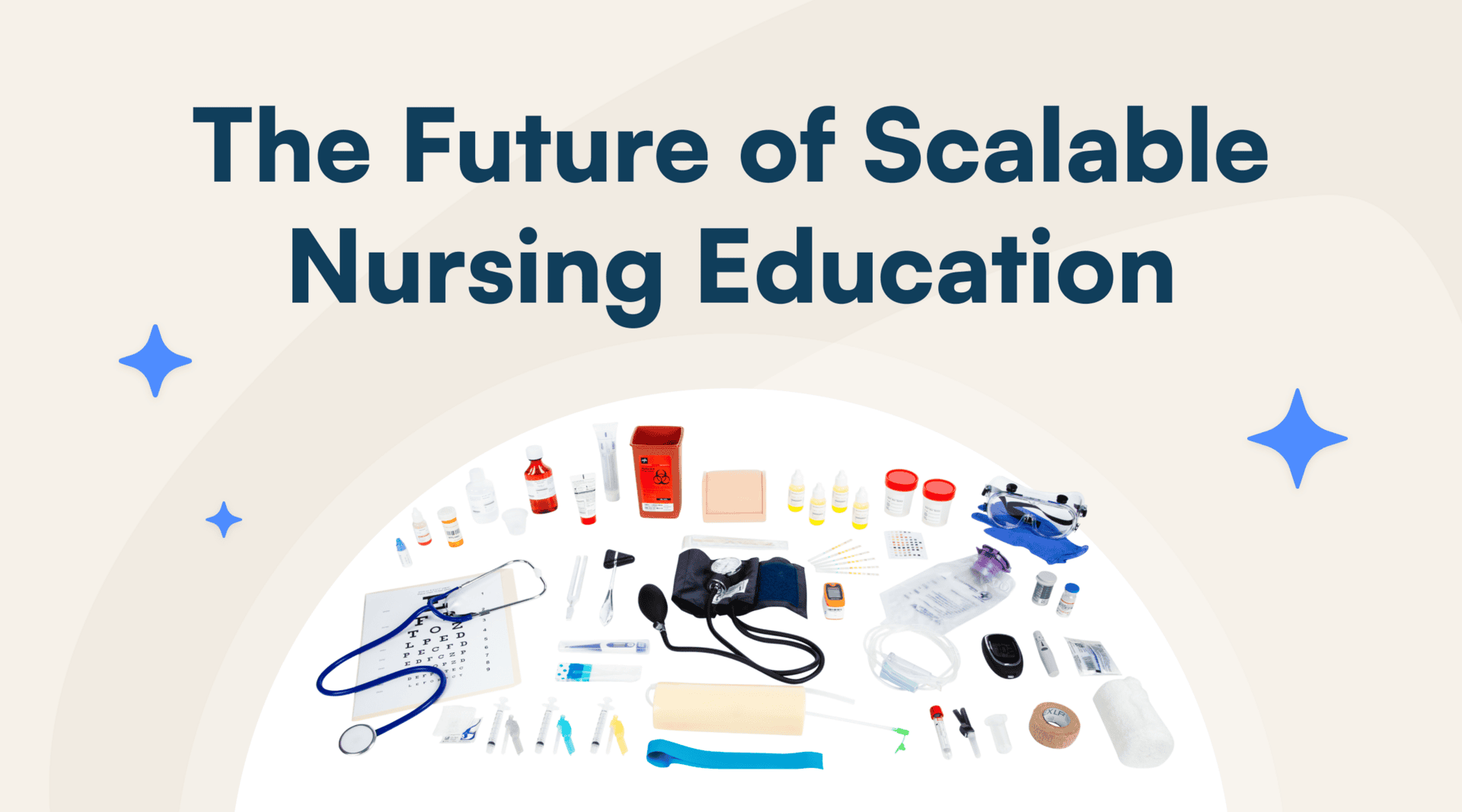
Science Interactive Launches New Nursing Fundamentals
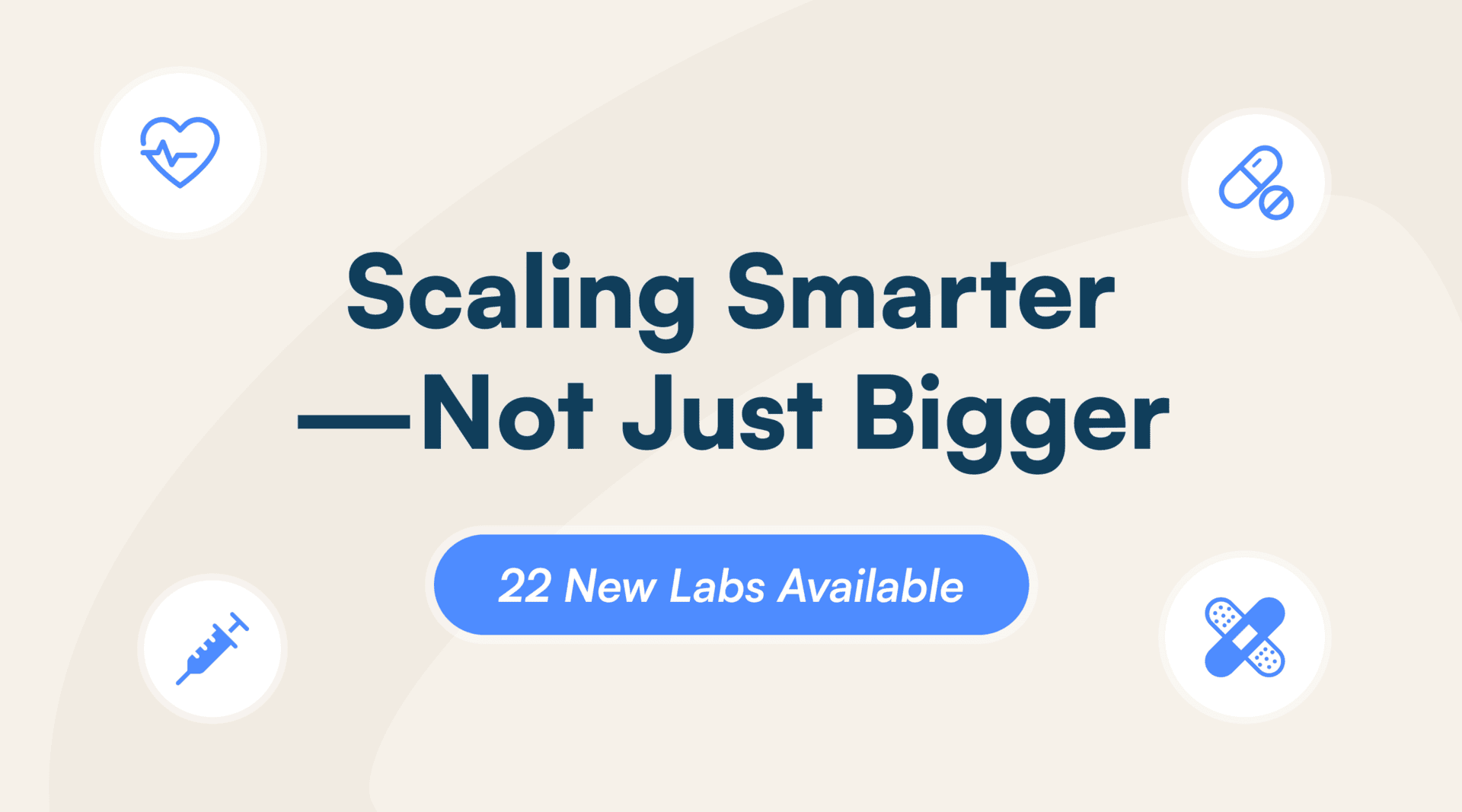
What Clinical-Ready Actually Looks Like (And How to Get There Sooner)
